CARAS Grant Winner Shines Light on His Heritage Through Art
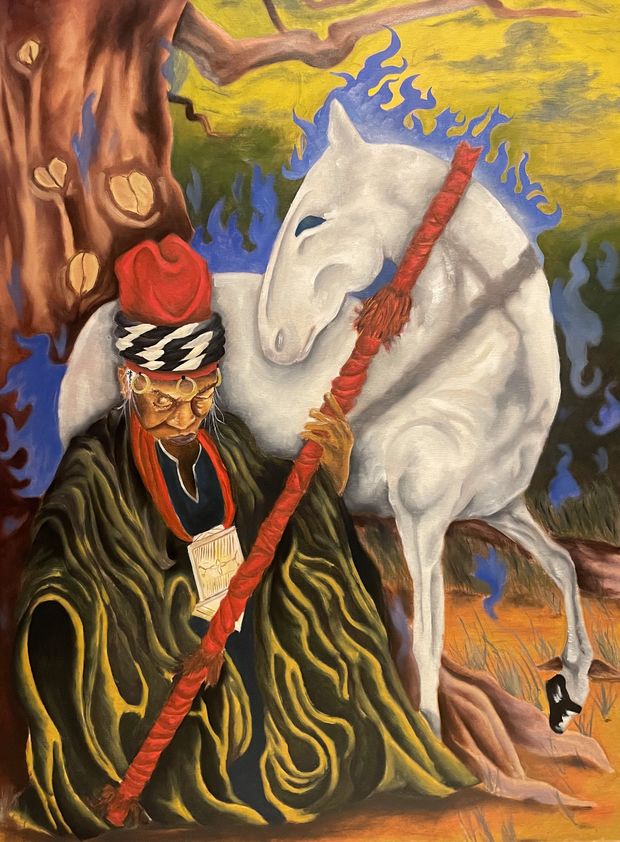
In December 2022, Printmaking major Eliezer Lompo (BFA ’25) was fortunate enough to travel to his parents’ country of origin, Burkina Faso in West Africa, and explore various aspects of the culture and heritage of Gourmantche tribe that they are a part of.
“As a second-generation immigrant, it has always been difficult to establish a strong connection with my culture” living in the United States as he found that very few artistic depictions of the Gourma people and their culture exist,” Lompo said recently.
“One of my biggest ambitions is to visually document the Gourmantche culture. Depictions of historical, mythological events, portraits of important figures, and native landscapes are what I plan to incorporate over a series of prints and paintings.”
Lompo has begun to realize his ambitions as a fall 2023 winner of Temple University’s CARAS (Creative Arts, Research and Scholarship) grant, which provides funding to encourage and support undergraduate students engaged in scholarly, creative, and research projects that contribute to advancing their field of study. Recipients can receive up to $4,000 to support research or creative arts projects undertaken with the supervision of a full-time Temple faculty mentor.

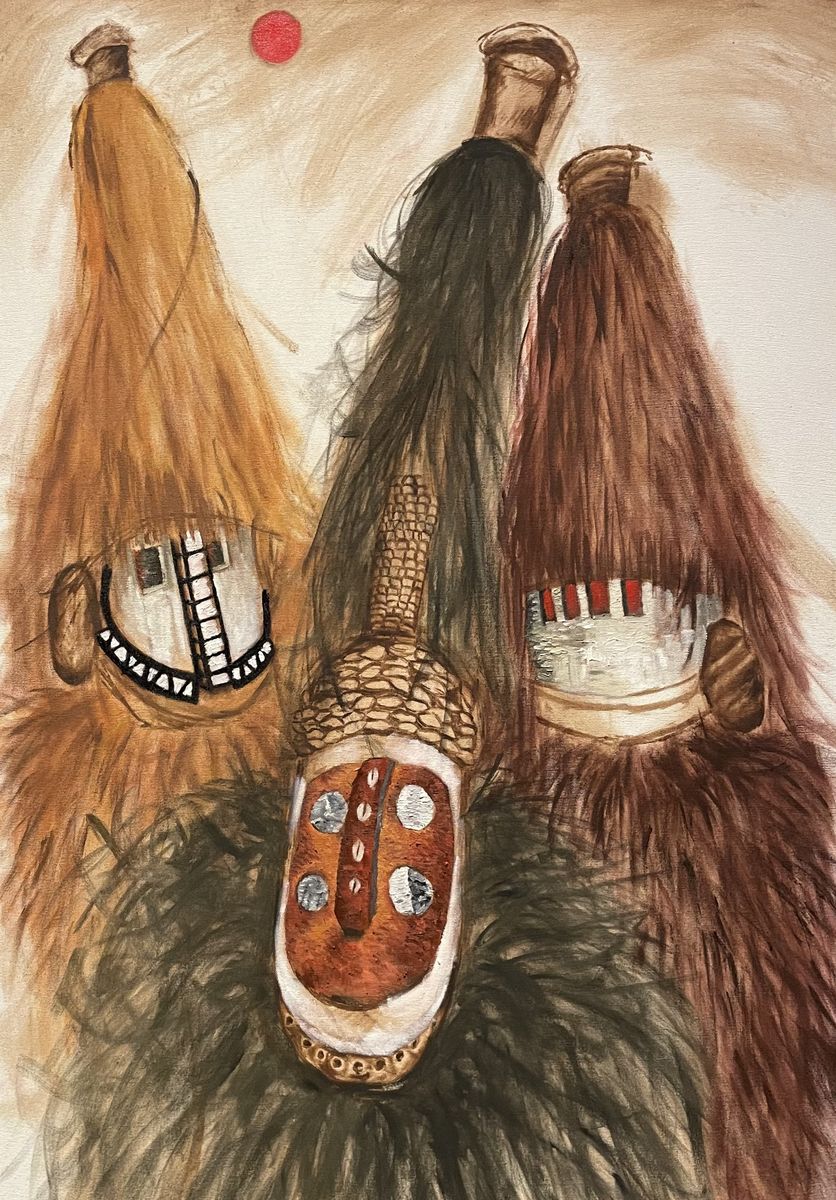
Dance, oil on canvas. 16”x20”. A crowd watching a Wan-Zega Mask ceremonial dance. (top)
Wan-Wan, oil on canvas, 27.5”x48”. Depiction of Wan-Zega Masks, male and female.
This summer, he will mount an exhibition in the Stella Elkins Tyler Gallery entitled Gourma Land, displaying up to 20 works – paintings in oil, etchings, screen prints and lithographs that range in size from small books to 36”x48” canvases. His compositions illustrate popular folktales, mythological beings, ancient kings, masked performances and other rituals of the Gourma people. The exhibition will be open June 5-15.
Lompo, the oldest of four sons and whose parents immigrated to the United States in 2003, the year he was born, said that he read a lot of French books to learn more about his ethnic heritage, but that it was difficult to find authoritative work to cite in his research. He found reliable scholarly writings by two anthropologists from the 1980s that gave an overview of the tribe, defined tribal lineages and subgroups, and chronicled how the tribe came to exist.
He said his parents, especially his father, was a main secondary source of information as his father is from one of the principal families in the Gourma tribe and “received a lot of knowledge” when he was growing up.
“I do my best to educate myself as much as I can about my ethnic background, but whether through language, tradition, or lifestyle, I always felt that I barely grasped the true value of my culture,” said Lompo. “Being [in Burkino Faso] was an eye-opening experience. I tried to pay attention to every little thing I could, how people interacted, their ways of life, and even the details of nature there.”
Lompo said what struck him most about the country was how different it was from his experiences growing up in America, with the color of the sky and ground seemingly different from what he was accustomed to. “It was really like being in a different world in a place where everyone looked the same as me, but people could tell I was American.”
One portrait from his work for the project shows a red-black-and-white turbaned ruler, Yendabli, 14thGourmantche King, sitting beside a stout tree with horse hooves imprinted on its trunk and holding a red staff, accompanied by a snow-white horse surrounded by blue flames against a yellow sky.
It is a reference to a legend that the tribe’s founder rode his horse up a sacred baobab tree and disappeared into the sky, leaving only hoof prints on the tree in Fada N’Gourma, the capital for the Gouma people. Other images reinforce the culture’s traditional masks, protective spirits, drumming, rites and dances.
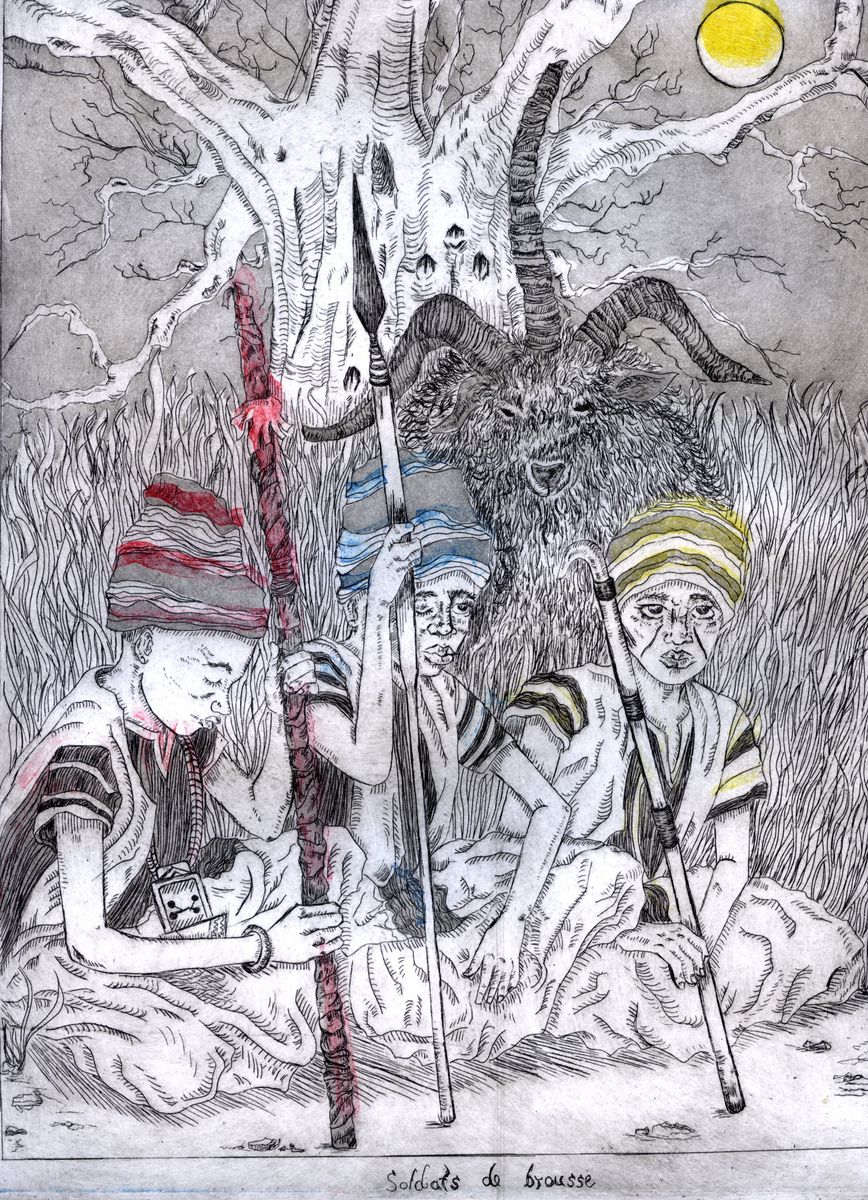
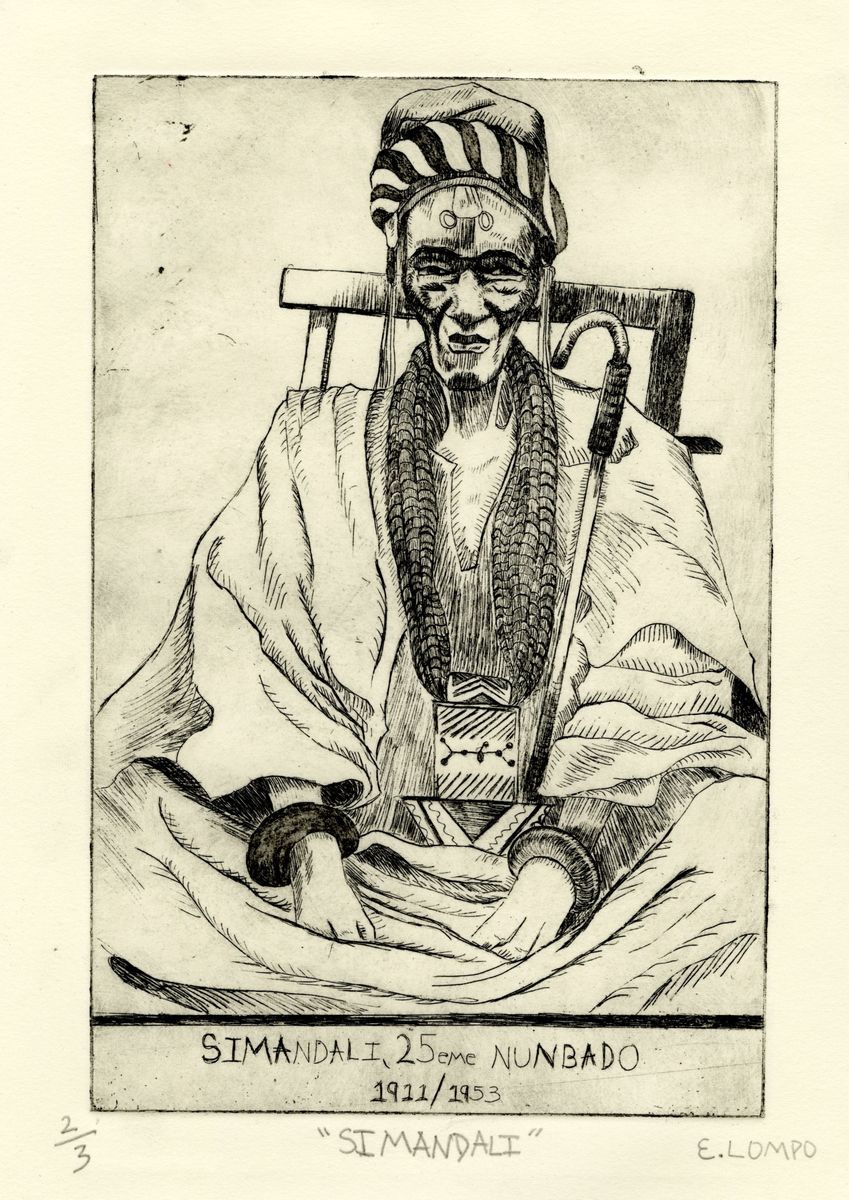
Bush Soldiers, etching, 11”x14”. Three newly initiated Gourmantche boys, emerging from the bush. (top)
Simandali, 25th Ruler, etching. 8”x11”. Portrait of the 25th King of the Gourma region, who was central in the fight against French colonialism during his reign, until being exiled in the 1940s.
Lompo said that “storytelling through a progression of images” is how he has come to stylistically approach his projects, with iterations of a central theme or topic such as current and historical tribal rulers, legendary stories and supernatural events.
He said he was nervous about applying for the grant, a step he took at the suggestion of a fellow classmate and the encouragement of Printmaking Professor Emerita Hester Stinnett, because he was unsure how his proposal would be received. Stinnett supervised his project.
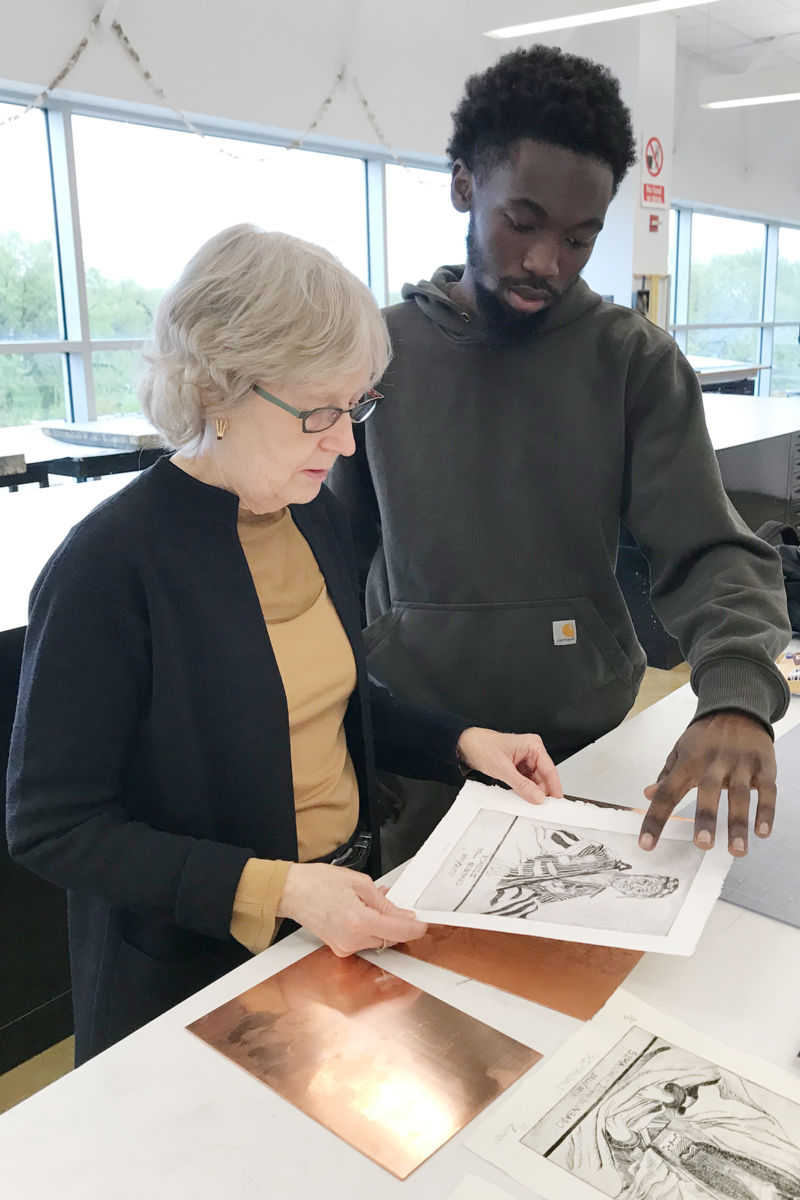
Stinnett and Lompo.
“Seeing the acceptance and how much support I’ve gotten, it makes me proud to contribute to my culture,” said Lompo. “I appreciate that others see my work as an important contribution, and it’s given me a big boost in confidence. It has allowed me to see that there is so much more to be done.”